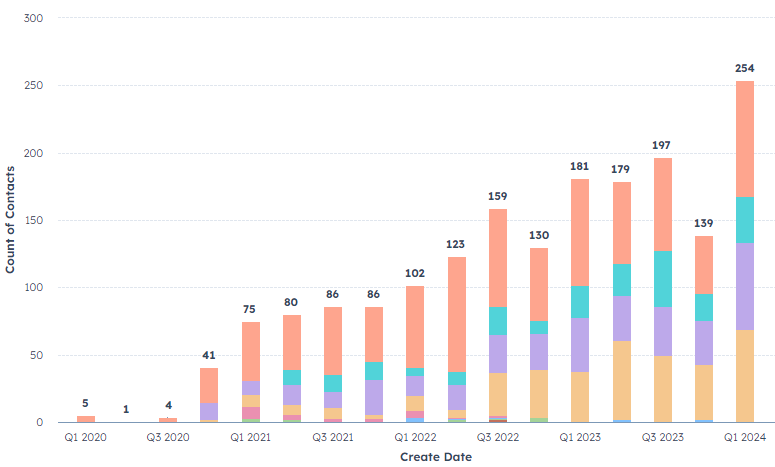Industrial Equipment Manufacturer
Optimizing Google Ad Campaigns for Record-Breaking Results
roles & responsibilities: SEM auditing, Optimization, & Management, Competitive Analysis, Keyword Research
Outcomes: Record breaking lead generation and closed/won opportunities across all channels, Decreased CPL for paid search
In today’s digital marketing landscape, it’s easy to assume that high-quality scores and a 100% optimized rating from Google guarantee efficient ad spending and strong performance. However, that’s not always the case. This experience with one account showed that even with glowing Google metrics, campaigns can be plagued by inefficiencies, poor targeting, and irrelevant keywords. Here’s how I identified the problem, took action, and transformed our campaigns to achieve record-breaking results.
Situation
When I first assessed the account, the campaigns were in a dire state:
- Budget Utilization: The campaigns were only spending a single-digit percentage of their daily budget, leaving untapped potential on the table.
- Keyword Irrelevance: Thousands of irrelevant keywords were added automatically, cluttering campaigns and grinding some to a halt.
- Ad Structure: All broad match keywords and auto-apply recommendations were enabled, leading to inefficient spending and chaotic campaign structures.
- Ad Copy and Extensions: Most ad groups lacked multiple ads, and underutilized callouts and extensions. Ad copy was weak, and landing page experiences were disconnected.
- Lack of Differentiation: Brand and non-brand keywords were lumped together, meaning ads couldn’t cater to specific products or categories.
- Targeting Issues: All devices and audiences were targeted indiscriminately.
Despite Google’s recommendations, the account was underperforming. It was time to intervene and right the ship. My goal was clear: optimize the campaigns for efficient spending while improving lead quality and overall conversions.
Phase 1: Immediate Cleanup
- Pause Inefficient Keywords: We halted spending on keywords that were underperforming and not converting.
- Exact Match Targeting: We shifted most keyword targeting to exact match to refine targeting, keeping some phrase and broad match keywords to ease concerns.
- Turn Off Auto-Apply Recommendations: We disabled all automatic recommendations to prevent irrelevant keywords from flooding the campaigns.
- Ad Copy Improvements: Initial changes to ad copy were made quickly, incorporating common-sense adjustments.
Phase 2: Full Campaign Restructuring
Campaign Restructure: Using Ads Editor, we reorganized campaigns into distinct brand and non-brand groups, product and category. Ad copy was tailored to each segment, and specific landing pages were created to align with the ad message.
Prioritize by Need: Given the four different brands, we prioritized restructuring based on which were most affected.
Review and Validate: We reviewed the new structure, ad copy, and landing pages, refining the targeting, bid strategy, and learning periods to align with each brand’s goals.
Result
Due to the niche nature of the industry, some campaigns took 3-4 weeks to exit the learning phase. During this period, we switched to a maximum clicks strategy to generate initial conversions. Once campaigns were stable with around ten conversions, we reverted to a maximum conversions strategy. We paused Performance Max campaigns temporarily to give the new ad groups space to grow.
By Q1 2024, following a staggered relaunch of the four brands throughout Q4 2023, all brands saw record-breaking paid search and lead generation performance. Optimized targeting, compelling ad copy, and clean structures helped these campaigns achieve unprecedented results.
Key Takeaways
- Structure Matters: Organizing campaigns by brand, product, and category significantly improves performance.
- Customization: Tailored ad copy and landing pages aligned with user intent drove higher conversions.
- Precision Targeting: Focusing on exact match keywords and using device and audience-specific strategies can yield higher ROI.
In digital marketing, automation is useful, but strategic oversight ensures sustainable success. By restructuring and optimizing the campaigns, we delivered efficient spending and quality leads, proving that a personalized touch outperforms even the most sophisticated algorithms.
